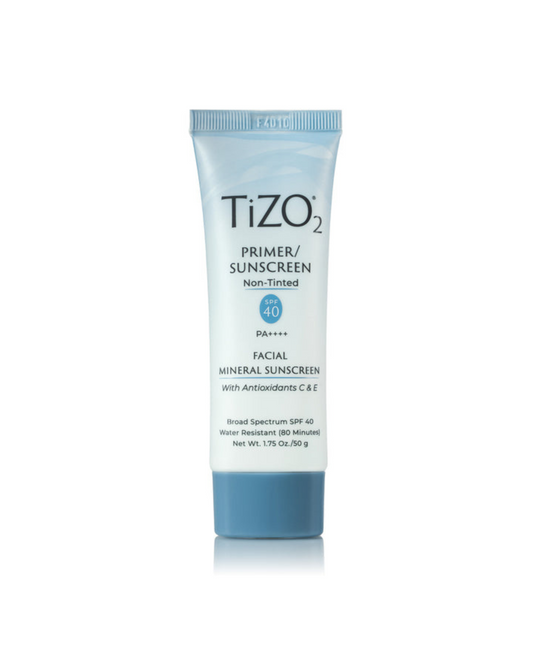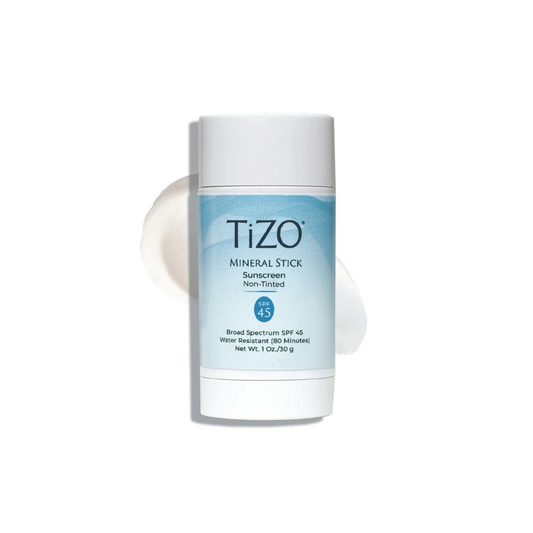
SUNSCREEN: WHAT YOU NEED TO KNOW
Claire PottsShare
Sun protection is essential, especially when you live in a place like our beautiful, Aotearoa. All year round, but especially coming into the summer months, we need to say “I’ll be back” to Netflix and bump our skins health and protection, up our priority list.
When we’re out in the sun we’re exposed to UV (ultraviolet) radiation. There are two types of UV radiation that penetrate our atmosphere; UVA or ‘Ultraviolet A rays’ and UVB or ‘Ultraviolet B rays’. Whilst we need UV exposure to produce vitamin D which is essential for the health of our bones, too much exposure can cause premature ageing, skin damage (sunburn and tanning), skin cancers and blistering. New Zealand has one of the highest rates of melanoma in the world — one of the most life changing conditions resulting from excess sun exposure — which is why we need to be educated about what we’re exposed to and what we’re putting on our bodies so that we can enjoy what NZ has to offer at no expense of our skin.
In New Zealand, our UV levels increase over summer, this is due to a few factors. One being because the earth is closer to the sun in December and January. The second being due to our comparative lower population and remoteness; our atmosphere is relatively clean, meaning we have lower air pollution levels but higher UV levels as the UV rays have a clearer passage to pass through. Lastly, the big O - our ozone layer. Whilst most UV rays are absorbed by the ozone layer, due to the hole in our ozone, there is a lack of ozone molecules to absorb the UV rays before they reach us. All of these factors are what contribute to our increased sun exposure, especially for those in the North island.
If you didn’t already know, there are two types of sun protection; chemical and physical. Chemical sunscreens contain UVA or UVB absorbing ingredients whilst creating a thin film on the skin, ‘screening’ and reducing the UVR penetration to the skin. Whilst they reduce the penetration, UV light is still penetrable due to the absorbing ingredients. Once the light is absorbed, there is a chemical reaction between the ingredients where the UV light becomes heat, increasing the internal body temperature, dissipating from the skin. Physical sunblocks are naturally ‘broad spectrum’, meaning they protect against both UVA and UVB rays. Physical sunblocks contain ingredients that completely ‘block’ UVR and reflect them back into the atmosphere.
CHEMICAL SUNSCREENS
Pros:
- Tends to be thinner in consistency and spreads easily on the skin
- Less product is needed as the risk of spaces between sunscreen molecules after application is non existent
- Additional ingredients such as peptides and enzymes are able to be easily added to this formulation
Cons:
- Needs to be applied 20 minutes prior to sun exposure and will not provide sufficient protection before then
- Chance of irritation and stinging is higher due to the combination of ingredients used to become ‘broad spectrum’ and the way they react when exposed to sunlight
- The higher the SPF, the higher the risk of irritation for sensitive skins due to the above
- Frequency of application needs to be higher due to the absorption effect
- Can be comedogenic
- Can worsen Melasma and rosacea due to the heat dissipation increasing the body’s internal temperature
- Uses ingredients with endocrine disrupting effects that can cause hormonal and allergy related problems
PHYSICAL SUNSCREEN
Pros:
- Naturally broad spectrum protecting against both UVA and UVB rays
- Provides instant protection, no wait time
- Lasts longer when in direct UV light
- Less likely to irritate or cause the skin to sting
- Less likely to clog pores making it a better option for acne prone skins
- Has a longer shelf life than chemical sunscreens
- Is not absorbed into the skin
- Reflects the suns rays like a mirror instead of absorbing them like chemical sunscreens
- Doesn't heat the skin like chemical sunscreens do
Cons:
- Due to the molecules being smaller, gaps between molecules allow light through, so regular re-application is necessary.
- Older formulations can leave a white film on the skin, however newer products have improved this issue to accommodate all skin tones
- Can rub, sweat and rinse off easily. Look for formulations that have water resistant ingredients like beeswax.
There are pros and cons to both types as shown above, however according to the 2019 FDA proposed classification as GRASE (generally recognised as safe and effective) the only ingredients that meet that standard are the two active ingredients found in physical sunblocks.
SUNSCREEN INGREDIENTS
The ingredients in sunscreens can be divided into parts. The "active" UV filters and the inactive ingredients. UV filters make up around 30% of the formulation and are the ingredients that provide the 'SPF' (sun protection factor - the higher the SPF the higher the sun protection) and ensure photo stability (resistance to change under light) and balanced UV protection. The inactive ingredients make up the bulk of the sunscreen and provide a base for the UV filters to be applied. Inactive ingredients are usually emollients, emulsifiers, preservatives and fragrances.
UV FILTERS
Zinc oxide
GRASE ingredient that has not been found to penetrate the skin, regardless of repeated use. Zinc oxide is a photo-stable ingredient. It is effective at providing broad spectrum SPF and is safe for sensitive skins as it also has healing qualities. Non Nano particles are reef safe and not able to be inhaled making it a safe choice for all family members.
Titanium dioxide
GRASE ingredient that has not been found to penetrate the skin, regardless of repeated use. It can be found in SPF makeup, pressed powder and whitening products. It is usually the primary ingredient in a sunblock as it is a broad spectrum UV filter. Caution is advised when it comes to spray forms of sunblocks including titanium dioxide as the nanoparticles when inhaled could possibly be carcinogenic to humans (only animal studies have been conducted however). It is best to look for products that contain Titanium Dioxide in Non Nano form.
Oxybenzone
Oxybenzone is a chemical sunscreen ingredient that works by being absorbed into the skin. It can found in the blood, placenta, breast milk and semen of users and can be detected in the urine 30 minutes after application. Oxybenzone can behave like an endocrine disruptor, potentially decreasing testosterone levels in young boys, as well as increasing the risk of endometriosis and breast cancer. Some countries have banned Oxybenzone because of the devastating effects on marine life.
Octinoxate
Also known as ‘Octyl methoxycinnamate’ an organic UV filter which is absorbed into the body after one use and can be found on the skin and in the blood of the user weeks after application. Octinoxate has been linked to hormone disruption and skin allergies. The sale of sunscreens with this ingredient is banned in many countries due to it not being reef safe.
Octisalate
An organic UV filter which is absorbed into the body after one use at 10 times more than 0.5 nanogram per milliter (FDA’s cutoff for systematic exposure which is the maximum concentration that can be found in blood before safety concerns may arise). This chemical has been linked to allergic reactions such as contact dermatitis.
Homosalaten
An organic UV filter which is absorbed into the skin after one use and can be found on the skin and in the blood of the user weeks after application. Homosalaten disrupts hormones and produces toxic byproducts over time.
Otocrylene
Otocrylene is absorbed into the body after one use at levels around 14 times the FDA cutoff for systemic exposure. Otocrylene can be found on the skin and in the blood of the user weeks after application. It is linked to skin allergies and is not reef safe.
Avobenzone
Also known as 'Butyl Methoxydibenzoylmethane' an organic UV filter that provides protection against UVA rays and is used in conjunction with other organic filters to offer broad spectrum protection. It is absorbed into the body after one use and can be found on the skin and in the blood of the user weeks after application. Avobenzone is an unstable ingredient which needs other ingredients to stabilise it. If the product begins to break down, the byproduct can cause allergic reactions. Avobenzone also has endocrine disrupting effects.
INACTIVE INGREDIENTS
Emollients and emulsifiers are the fillers that make up the other 70% of your sun protection. Emollients have three roles; to be soluble, photo-stabilising (resistant to light exposure) and to improve the sensory experience of the product ie. spreadability, fragrance, texture. Emulsifiers are what determines the formulation type, whether its an oil in water (O/W) system or a water in oil (W/O) system. These include common ingredients like perfume, colour and preservatives, as well as some tongue twisting ones like potassium cetyl phosphate, phenoxyethanol and glyceryl stearate, which you would find are in a lot of the products you have at home.
WHAT SHOULD YOU LOOK FOR IN YOUR SUNSCREEN?
We recommend looking for a sunscreen without chemical UV filters which are bad for you and the environment. Instead look for Zinc or Titanium in your sunscreen which are physical broad spectrum UV filters that won't absorb into your skin. Make sure the in-active ingredients that make up the bulk of your sunscreen are non toxic and hypoallergenic and never use a sunscreen that has expired.
We all want to live in the best version of our skin, so wearing a sunblock is better than nothing, but knowing your own skin, reading the label and knowing what to look for before buying your next sun protection could make your summers all the more bright.
Written by Zoe Parker
Resources:
https://health.howstuffworks.com/skin-care/beauty/sun-care/active-ingredients-in-sunscreen.htm
https://www.chemicalsafetyfacts.org/chemistry-context/sunscreen-summertime-safety/
https://www.epa.gov/endocrine-disruption/what-endocrine-disruption
https://forefrontdermatology.com/chemical-vs-physical-sunscreen/
https://www.everydayhealth.com/skin-beauty/chemical-vs-mineral-sunscreen-whats-difference/
https://dermatology.ca/sunscreens-benzene-exposure-risk/
https://www.webmd.com/melanoma-skin-cancer/difference-between-uva-rays-and-uvb-rays
https://www.ehinz.ac.nz/indicators/uv-exposure/about-uv-exposure/
https://www.fda.gov/news-events/press-announcements/fda-advances-new-proposed-regulation-make-sure-sunscreens-are-safe-and-effective
https://www.ewg.org/sunscreen/report/the-trouble-with-sunscreen-chemicals/
https://haereticus-lab.org/oxybenzone-2/



